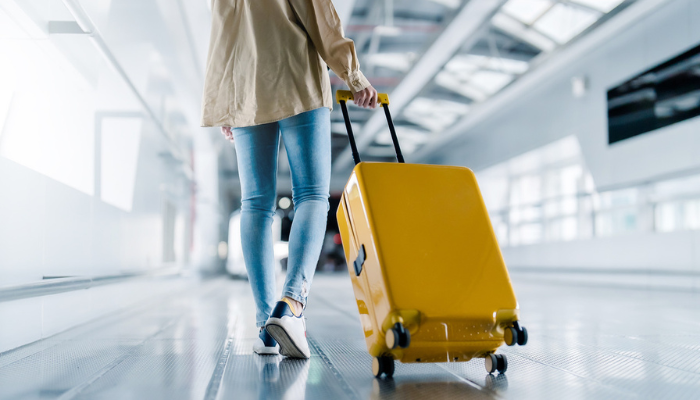
02 Oct A government shutdown may not stop air travel but could worsen it.
The U.S. air travel system may encounter notable difficulties in the event of a federal government shutdown.
With the potential shutdown drawing closer, numerous federal programs and agencies could cease operations due to insufficient funding, resulting in employee furloughs.
Certain federal workers, such as air traffic controllers from the Federal Aviation Administration (FAA) and Transportation Security Administration (TSA) screeners, Might still be obligated to work without pay during this period. While they will eventually receive their back pay when government funding resumes, delayed paychecks could result in more absences, potentially causing flight delays and cancellations.
The impact of a government shutdown is just not limited to aviation. The U.S. Travel Association has warned that it could lead to a daily loss of $140 million in travel spending, aggravating security lines and flight delays. It might also hinder critical upgrades at poorly maintained U.S. airports.
A survey by Ipsos found that 60% of Americans would consider postponing or refraining from air travel during a government shutdown.
Transportation Secretary Pete Buttigieg mentioned that a shutdown would force the Department of Transportation to stop training new air traffic controllers and furlough around 1,000 controllers currently in training. With an average of 45,000 daily U.S. flights, a brief shutdown could disrupt efforts to address air traffic controller staffing shortages, despite hiring plans for the coming years.
Buttigieg stressed that staffing and training delays could have long-term consequences, making the air travel system more vulnerable. Moreover, the stress on transportation workers, coupled with ongoing inflation and delayed paychecks, could worsen the situation.
The previous government shutdown, that lasted from December 2018 to January 2019, partly ended due to concerns within the transportation sector. Unions representing air traffic controllers and aviation safety inspectors raised safety concerns, while security personnel taking sick leave led to longer airport lines. Ultimately, a group of air traffic controllers staging sick-outs caused widespread East Coast flight delays, contributing to the shutdown’s resolution.
This combination of frustration and fragility played a pivotal role in ending the previous government shutdown, which was the longest in U.S. history, spanning from December 2018 to January 2019. As the shutdown persisted, unions representing aviation safety inspectors and air traffic controllers expressed apprehensions about the safety of air travel due to worker furloughs. Some of them were eventually instructed to resume work to ensure public safety.
Meanwhile, mounting frustration due to delayed pay resulted in an increasing number of security personnel taking sick leave, causing longer queues and delays at airports nationwide. The tipping point occurred when a group of ten air traffic controllers simultaneously initiated sick-outs, leading to extensive flight delays on the East Coast. This heightened pressure played a pivotal role in ultimately ending the protracted government shutdown.
Considering these previous incidents and the potential ramifications of a government shutdown, there exists significant apprehension within both the aviation industry and among travelers. The careful balance of keeping air travel safe and smooth could be thrown off, affecting the entire travel system.
As the deadline gets closer, people in the aviation industry and others are watching closely, hoping for a solution that stops past problems from happening again and ensures that the U.S. air travel system stays safe and works well.


